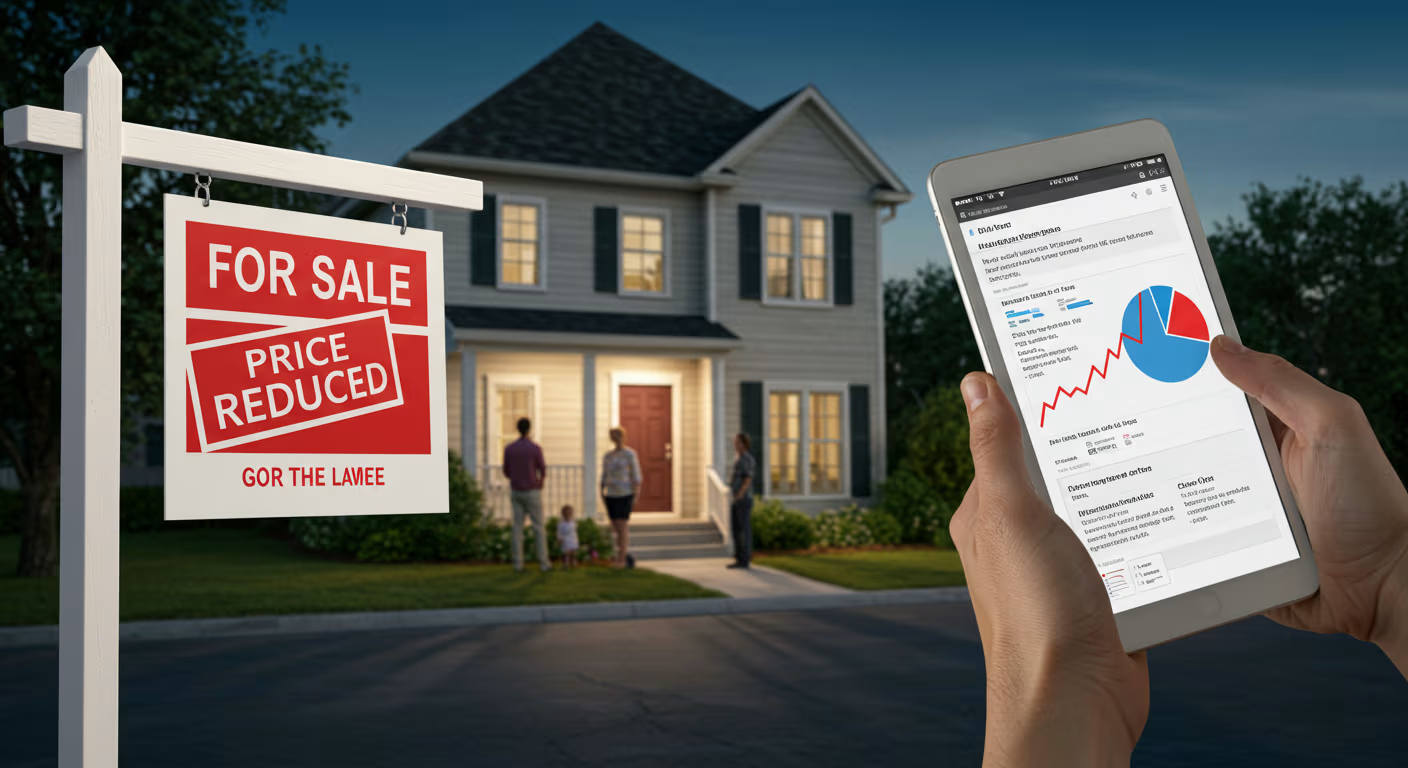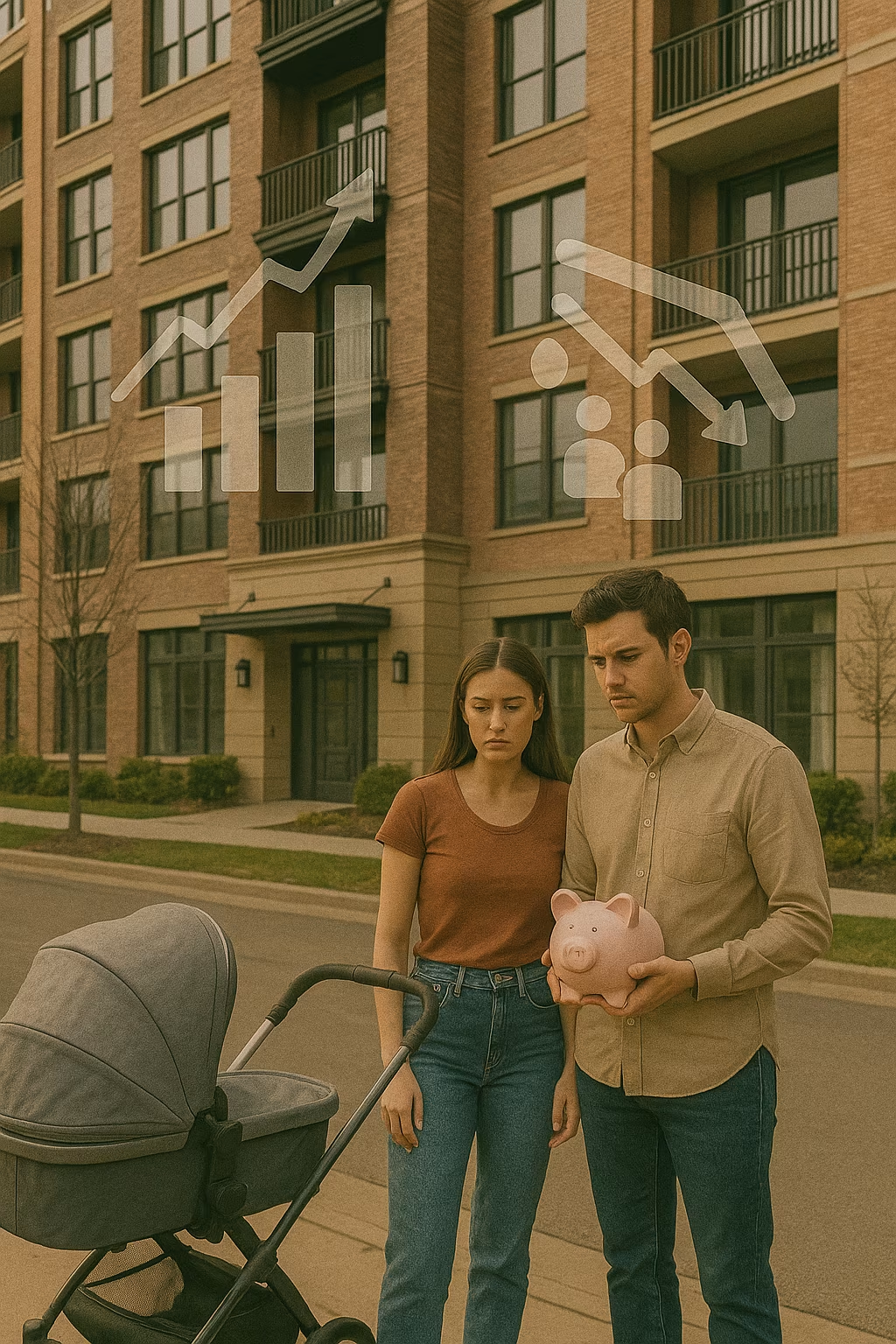After months of holding steady—or even climbing—in the face of high interest rates, U.S. home prices slipped slightly in June, offering a glimmer of hope for frustrated buyers. According to the latest national housing data, the median home price dipped by 0.1% compared to May, marking the first monthly decline since early spring.
While the drop is modest on the surface, it reflects a growing shift in market dynamics. More inventory, softer demand, and increased buyer caution are beginning to put downward pressure on home values—particularly in cities that saw dramatic price growth during the pandemic boom.
Across the nation’s 50 largest metropolitan areas, a majority saw either flat or declining prices in June. The correction, while small, signals that the overheated real estate market may finally be cooling—even if slowly and unevenly.
What the 0.1% Decline Tells Us
Though a tenth-of-a-percent dip may seem insignificant, it carries meaningful implications. For one, it’s a signal that home price resistance is growing, especially in markets where affordability has become a critical issue. After multiple years of double-digit price gains, even small corrections are noteworthy.
June’s national home price index showed:
- A 0.1% decline from May
- Annual price growth slowing to just 1.8%, down from 4.1% at the beginning of the year
- Inventory rising by 6% month-over-month, especially in mid-tier and luxury segments
Analysts suggest this trend could continue into the second half of the year if mortgage rates remain elevated and sellers become more flexible in pricing.
Major Metros See the Biggest Adjustments
The softening wasn’t evenly distributed across the country. Markets that saw the most aggressive price growth during the pandemic—especially in the Sun Belt and Western U.S.—are now experiencing the sharpest declines.
Here are some of the standout metro markets in June:
- Austin, TX: Prices fell 0.7% from the previous month, as new construction and high inventory levels add pressure.
- Phoenix, AZ: Down 0.5%, continuing a slow correction after years of overheated growth.
- Boise, ID: Prices dropped 0.6%, with high-priced listings seeing fewer offers.
- Las Vegas, NV: Declined by 0.4%, driven by affordability concerns and higher borrowing costs.
- San Francisco, CA: Down 0.3%, reflecting tech industry slowdowns and migration outflows.
Meanwhile, some East Coast cities and Midwestern markets remained relatively stable, buoyed by tighter inventory and more balanced demand.
- Chicago, IL: Flat month-over-month, with strong demand for single-family homes in suburbs.
- Boston, MA: Up 0.2%, supported by job growth and tight supply.
- Charlotte, NC: Held steady, though activity has cooled slightly from 2023 levels.
Buyers Gaining (Some) Ground
The dip in prices, however minor, is being interpreted as a sign of opportunity for buyers who have been priced out over the last few years. More homes are lingering on the market, sellers are increasingly open to negotiation, and price cuts are becoming more common—particularly on homes that have sat for more than 30 days.
In June, nearly 33% of all active listings nationwide saw at least one price reduction, according to Redfin. That’s the highest rate since mid-2022 and an indication that sellers are beginning to adjust to new realities.
For buyers, this could mean:
- Less competition and more time to make informed decisions
- A return of contingencies and inspections in purchase contracts
- Better chances to negotiate closing costs or interest rate buydowns
Still, affordability remains a major hurdle, especially with mortgage rates hovering near 6.8% to 7% for 30-year fixed loans.
Sellers Face a Shifting Market
For sellers, the message is clear: the days of automatic bidding wars and “name-your-price” listings are fading. If your property isn’t priced competitively—or lacks curb appeal and updates—it may sit longer or sell below asking.
The average time on market in June ticked up to 34 days, a notable increase from the 21–25 days seen during the peak buying months of 2021 and 2022. Price sensitivity is returning, and homes that are overpriced are getting overlooked.
That said, well-maintained homes in desirable school districts or close to major employment hubs are still seeing strong demand—just not the frantic activity of years past.
Builders Adjust Strategies
New homebuilders are also feeling the pressure and are adjusting pricing strategies to attract buyers. With higher mortgage rates sidelining many, builders are increasingly offering:
- Rate buydown incentives
- Free upgrades or design credits
- Assistance with closing costs
Despite this, new home starts are holding steady, particularly in southern states like Texas, Florida, and Georgia, where population growth continues to drive long-term demand.
What Could Influence Prices Moving Forward
Whether June’s price decline turns into a longer trend will depend on several economic factors:
- Interest Rates
If mortgage rates remain in the 7% range, buyer demand may stay muted. Any drop below 6.5% could spark renewed interest and price stabilization. - Inflation and the Federal Reserve
Continued progress on inflation may prompt the Fed to ease policy, potentially lowering borrowing costs. But any surprises—such as higher inflation or recessionary signals—could sway both buyers and sellers. - Job Market Health
Employment remains strong nationally, but regional slowdowns (particularly in tech and finance hubs) could impact local real estate demand. - Inventory Levels
A meaningful rise in listings—especially from move-up sellers or investors offloading properties—could tip the balance further in favor of buyers.
What This Means for Buyers and Sellers Now
For buyers, this may be a good time to re-enter the market—but only with caution. The slight price drop is encouraging, but mortgage affordability remains the dominant challenge. Be sure to:
- Get pre-approved at multiple lenders
- Shop around for the best interest rate and terms
- Look for homes that have been on the market for over 30 days
- Negotiate for concessions and rate buydowns where possible
For sellers, the key is adaptability. Gone are the days of automatic over-asking offers. To succeed in today’s shifting market:
- Price realistically based on comparable recent sales
- Invest in staging and minor cosmetic updates
- Consider sweetening the deal with flexible terms or incentives
- Prepare for longer timelines and a more informed buyer pool
A Sign of Cooling, Not Crashing
The 0.1% drop in U.S. home prices in June may seem small, but it’s a subtle signal of a housing market in transition. With inventory on the rise, affordability under pressure, and economic uncertainty still looming, both buyers and sellers are approaching with more caution.
This is not a crash—far from it. But it could mark the beginning of a slow, healthy correction, especially in overheated metros. As we move into the second half of 2024, watch for regional differences to sharpen, negotiation to increase, and buyers to gain a bit more control.





